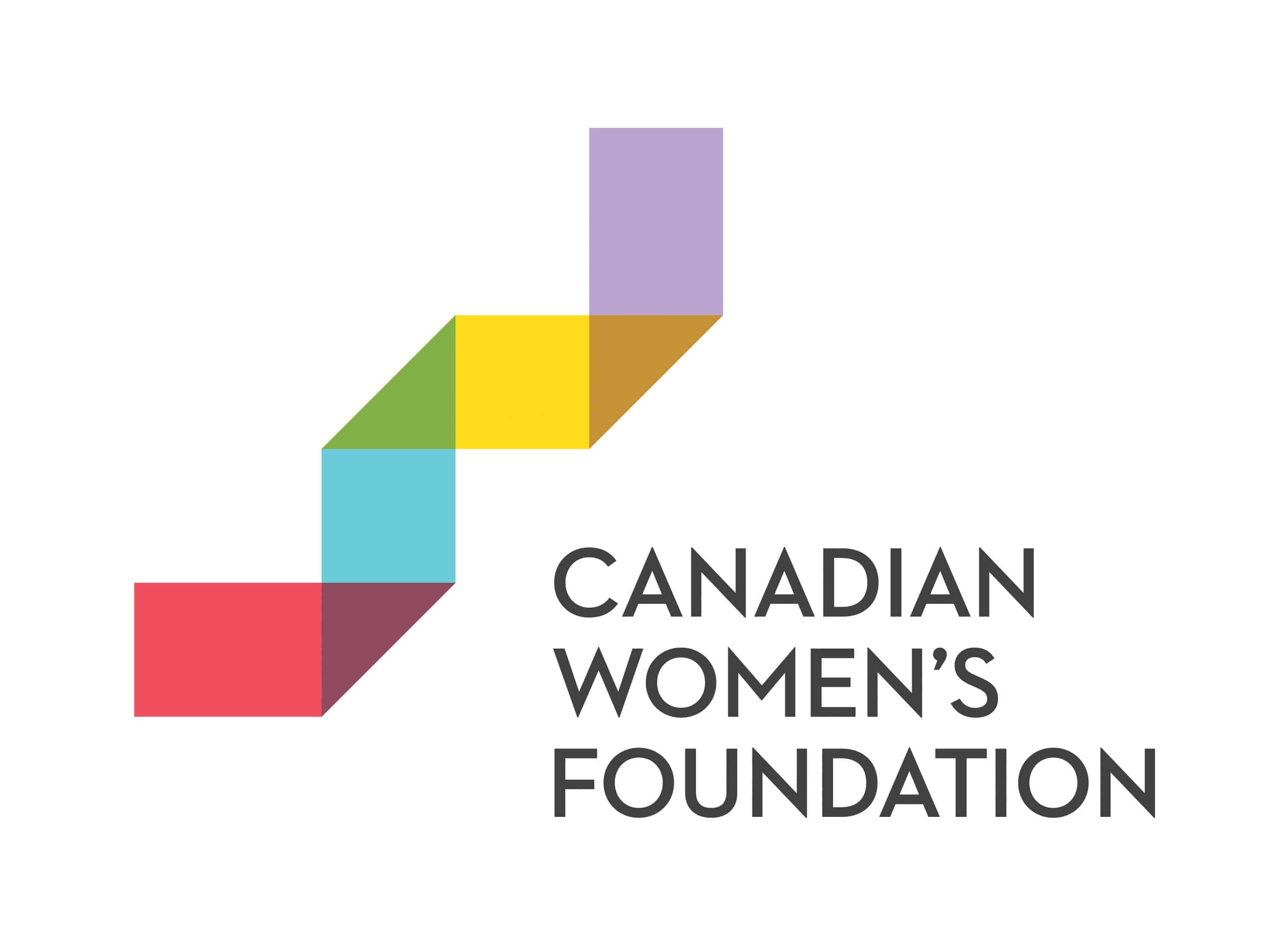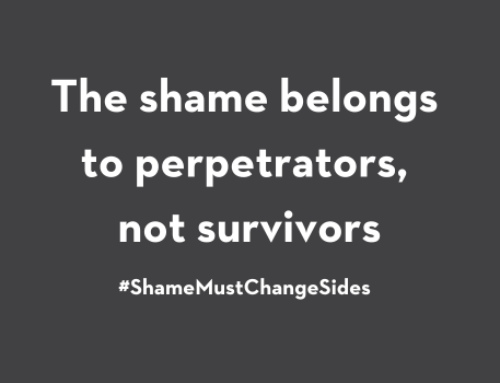
Her audience sees photos of zebras being chased by lions, cartoon illustrations of the human brain, and lots of flowcharts with coloured arrows. Though some of her slides are lighthearted, most are deadly serious. This presentation is designed to save lives.
Karen works for Children’s Centre Thunder Bay and her audience is primarily Aboriginal girls in their early teens. All have experienced physical or sexual abuse, or both. Karen recently worked with Sherry, a young teen who has been sexually assaulted four different times by four different adult men. The first assault happened when she was 12.
Karen’s job is to help girls like Sherry reverse the downward spiral caused by the trauma: self-hatred, panic attacks, substance abuse, high risk sexual behaviour, aggression, and self-harm. Girls who have been abused are eight times more likely to attempt suicide within a year of an assault. But given the right tools, Karen knows these girls can not only recover, but become resilient.
Resilience is the ability to get back up after you’re knocked down, and, in time, to regain your footing in life. A lack of resilience leaves you emotionally vulnerable, with a low sense of self-worth, easily influenced by others, accepting of mistreatment, and unable to see solutions to problems.
Resilience is a great life skill for everybody—after all, bad things can happen to anyone—but is especially important for adolescent girls.
While most girls start out strong and self-assured, in adolescence they are hit by a triple whammy: soaring rates of depression, a high risk of sexual assault, and an onslaught of hyper-sexualized imagery that destroys their self-esteem. But research shows it’s possible to help girls improve their mental health, recover from crisis more quickly, and reduce the likelihood of sexual exploitation.
What’s the secret? Confidence, critical thinking, and connection.
In special girls-only programs like Karen’s, girls recover their natural resilience through activities that engage their mind, body, and spirit. They thrive under the wings of female mentors, from Aboriginal Elders to athletes. They learn to recognize the everyday sexism in movies and music videos, and to come up with creative ways to tell their own stories. They take part in age-appropriate discussions on tough issues like dating violence, body image, bullying, and sexual assault. They also take on leadership and help to shape the programs themselves. While the programs vary in approach, all are designed to build confidence, critical thinking, and connection.
One of Karen’s key goals is to help the girls in her program to think critically about their experience so they can see how it’s been driving their behaviour. “Their whole life trajectory has been changed by the trauma,” she says. “They are no longer who they were.”
Though her presentation contains cartoons, it’s also crammed with information on the physical and psychological impact of trauma on the human body. For example, many girls who are sexually assaulted don’t fight back. Karen uses examples from nature to explain why. All animals, including zebras and humans, have three built-in responses to danger: fight, flight, and freeze. When running or fighting back is impossible or fails, victims often freeze or go limp. The girls also learn that their abuse of drugs and alcohol are often misguided attempts to cope with distress. K aren teaches them new ways to sooth themselves, including traditional Aboriginal teachings, yoga, and storytelling. When you’re trying to reclaim a lost life, you use everything at hand.
With Karen’s help, over time the girls begin to blame themselves less and believe in themselves more. As they share their stories with one another, a powerful bond forms within the group; this sense of connection is especially healing for girls who come from dysfunctional families.
Almost 1,500 kilometres away from Karen’s workshop, dozens of other girls are being empowered at the YWCA Cambridge Girls’ Centre, which offers several girls-only programs. For example, their TechGyrls program encourages girls to explore science, technology, engineering and math through hands-on learning and field trips.
When 13-year-old Emma first arrived at the YWCA Cambridge, she shuffled into the room in her pyjamas, wrapped in a blanket. She was rude and loud, disrupted the other girls by sitting upside down on the couch, and didn’t listen to the adult facilitator. “She was very leery,” remembers Program Coordinator Kate MacLaggan. “She didn’t know us and she didn’t trust us.”
In fact, Emma didn’t trust anyone. As a result of family problems she’d been placed in a group home, where she was quickly gaining a reputation as a trouble-maker. Something had happened to Emma, and she wasn’t bouncing back. Instead, her life was spinning out of control.
But Kate saw Emma’s behaviour as a classic bid for attention. Instead of punishing her, she gave her responsibility. “It was clear no one had validated her or even noticed her before,” says Kate.
At 13, Emma was one of the oldest girls in her program. Noticing that she bonded easily with younger girls, Kate tapped into this by asking her to act as an informal mentor. Soon Emma was helping girls one-on-one during program activities and teaching them how to do cartwheels during breaks. She has since flourished so much that she recently joined the Cambridge YWCA Girls Council. When asked why, she said: “I really want to inspire other girls.”
While this turnaround may sound miraculous, it’s almost predictable. Self-destructive behaviour often springs from low self-esteem; that’s why confident girls don’t tend to act out. A key goal of ’strength-based’ programs like TechGyrls is to recognize the inherent talents of each girl and find ways for her to shine.
Many of the girls, like Emma, come from troubled homes. Others live in poverty; one girl arrives at the program famished and heads straight to the snack table. Another girl, Suzanna, is being raised by a single mom who is struggling to raise two children alone; the father is a violent drug addict. “Suzanna was very clingy with the staff when she first got here,” says Kate. “Now she barely says hello to me—she runs right to her new friends.” For Kate, that’s a sign of healthy confidence.
Being born into a high income family is no guarantee of resilience. (And, according to research from Dalhousie University, over-protection is almost as bad for kids as neglect.) Resilience is less about income or individual temperament and more about having a strong sense of connection with family or school. Without those fundamental bonds, young people are more easily influenced by peer pressure and more easily lured by exploitive forces like gangs.
Parents can increase their children’s resilience through small actions such as regularly eating dinner as a family. But the mere physical presence of an adult isn’t enough. Children must feel heard and valued. K ate worries about one girl with a highly critical, controlling mother. “Her mom points out every spelling mistake and her art projects are never good enough.” This kind of destructive behaviour can quickly destroy confidence and damage the connection between parent and child.
Resilience isn’t the same as well-behaved. In fact, resilient children may behave in ways parents don’t like—they tend to ask a lot of questions and stand up for themselves. It’s natural for young people to want to think for themselves and discover their own path. But when the healthy rebellion of youth becomes a self-destructive pattern, it’s a clear sign of low resilience. In the same way, self-esteem isn’t the same as outspokenness. Loud girls like Emma may look confident but are often quite anxious. Another sign of low self-esteem is perfectionism: being devastated by small failures, being overly anxious to please, or being obsessed with one’s physical appearance.
Sadly, the age at which girls start to fret about their looks is getting younger and the culprit is popular media. Using sexy females to sell products is nothing new, but according to a recent study from the American Psychological Association the sexualization of women in media has intensified to the point where it is actually damaging girls’ mental health.
Told on the one hand that sexism is a thing of the past and on the other that they must achieve an impossible standard of beauty, girls hear a terribly disempowering message: “You can be anything you want, as long as you look like a supermodel.”
The impact is stunning: from Grade 6 to Grade 10, self-confidence among females plummets from 36% to 14%. Teenage girls are three times more likely than boys to feel depressed. In just one year in the U S, the number of girls aged 18 and younger who had breast implants nearly tripled. One British Columbia study found that 60% of girls who were actually too thin, thought they were too fat. In this same study, half of all the girls said they wished they were someone else.
As if this isn’t enough, girls aged 13 to 15 are at their highest lifetime risk for sexual assault. The vast majority of their assailants are someone they know; one-third are family members. Most girls aren’t physically forced, but manipulated, shamed, bullied, and threatened.
In the YWCA Cambridge media literacy program, Kate MacLaggan recently used the Beyoncé video “Girls R un the World” to empower the girls to speak out and to think more critically about the media messages around them.
“First I asked the girls to read the lyrics and imagine what kinds of images the video might have,” Kate says. “The words are pretty empowering, so they come up with all these great ideas—a girl as prime minister, or a bunch of girls marching together. Then they watch the video and they can’t believe it.” In case you haven’t seen it, women dressed in black bras, panties, and garter belts crawl on the ground, stick their butts in the air, bend over backwards, and dance with their legs wide open. They may sing, “We run the world,” but their bodies send a different message: my power depends on my sexual desirability.
When girls uncritically accept this message—which is everywhere these days—it helps to explain otherwise puzzling behaviour like texting explicit photographs of themselves. Many girls willingly exploit themselves in a bid for acceptance, especially if their confidence is low and they feel isolated and unwanted. Strengthening their sense of connection is vital to reducing their risk of sexual exploitation.
Back in Thunder Bay, Karen reflects upon the transformation her young charges are undergoing. Before Sherry, the victim of multiple assaults, took the program she had dropped out of school and suffered from attacks of rage. Now she’s back in school getting good grades and working part-time. “She’s going to be okay,” says Karen. “After they realize the assault was not their fault, find some calm, and strengthen their identity, you see a shift happen.”
They’re not the only girls who are changing. Across Canada and around the world, girls are beginning to take action. Recently, a 14-year-old in Maine led an online campaign that successfully forced Seventeen magazine to stop manipulating photos of young models to make them look skinnier and to show more racial diversity.
With the right kind of help, every girl can successfully navigate the risks of adolescence and emerge confident and connected, with the ability to recognize and challenge sexism and other injustices.
Imagine a whole nation of strong, resilient girls, speaking their minds. Now that would change everything.
*Names and identifying details of the girls in this story have been changed.
This post was originally published in the Fall 2013 edition of SHE magazine.
Learn More
- Join GEN1. Become a monthly donor and help us build the first generation to experience gender equality.
- Sign up for our e-newsletter to have our latest stories and resources sent to your inbox.
- Follow us on Facebook and Twitter to join a national conversation on gender equality.








